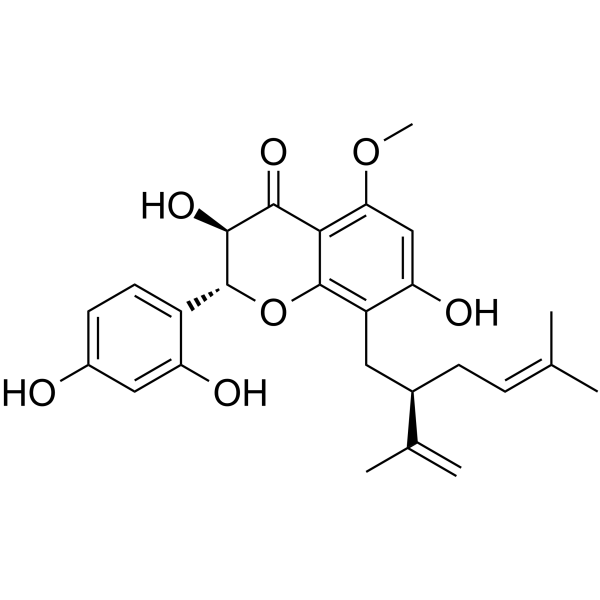
Kushenol I
CAS No. 99119-69-4
Kushenol I ( —— )
产品货号. M31173 CAS No. 99119-69-4
Kushenol I is a GABAA receptor modulator, it exhibits inhibitory activity against Sodium-dependent glucose cotransporter 2(SGLT2).
纯度: >98% (HPLC)
 COA
COA
 Datasheet
Datasheet
 HNMR
HNMR
 HPLC
HPLC
 MSDS
MSDS
 Handing Instructions
Handing Instructions
| 规格 | 价格/人民币 | 库存 | 数量 |
| 5MG | ¥1443 | 有现货 |


|
| 50MG | 获取报价 | 有现货 |


|
| 100MG | 获取报价 | 有现货 |


|
生物学信息
-
产品名称Kushenol I
-
注意事项本公司产品仅用于科研实验,不得用于人体或动物的临床与诊断
-
产品简述Kushenol I is a GABAA receptor modulator, it exhibits inhibitory activity against Sodium-dependent glucose cotransporter 2(SGLT2).
-
产品描述Kushenol I is a GABAA receptor modulator, it exhibits inhibitory activity against Sodium-dependent glucose cotransporter 2(SGLT2).Kushenol I is shown to be active against the plant pathogenic fungus Cladosporium cucumerinum.
-
体外实验——
-
体内实验——
-
同义词——
-
通路Others
-
靶点Other Targets
-
受体——
-
研究领域——
-
适应症——
化学信息
-
CAS Number99119-69-4
-
分子量454.5
-
分子式C26H30O7
-
纯度>98% (HPLC)
-
溶解度In Vitro:?DMSO : 100 mg/mL (220.02 mM)
-
SMILES——
-
化学全称——
运输与储存
-
储存条件(-20℃)
-
运输条件With Ice Pack
-
稳定性≥ 2 years
参考文献
产品手册




关联产品
-
Pulsatilla saponin D
白头翁皂苷 D 作为一种化学预防剂,对包括癌症在内的关键健康状况表现出潜在的有益作用,并且它通过细胞周期停滞和各种癌细胞类型的凋亡来抑制细胞生长。
-
MPEP hydrochloride
MPEP 盐酸盐是一种有效且高度特异性的 mGlu5 受体亚型非竞争性拮抗剂 (IC50: 36 nM)。
-
(E)-6-O-(p-coumaroyl...
(E)-6-O-(p-coumaroyl)scandoside methyl ester shows moderate anti-proliferation effect on PC3 human androgen-independent prostate cancer cells.



 021-51111890
021-51111890 购物车()
购物车()
 sales@molnova.cn
sales@molnova.cn







